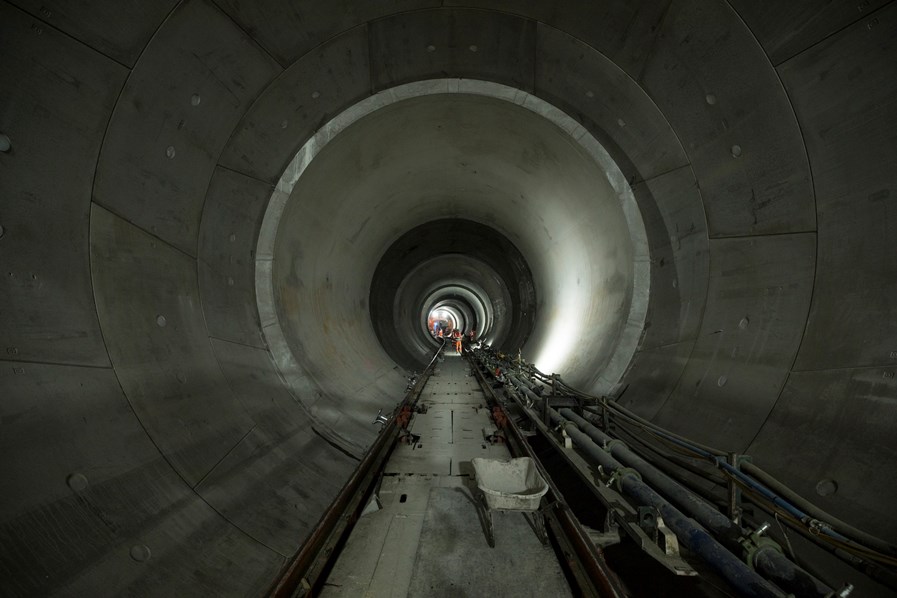Halfway mark reached for super sewer secondary lining
Just weeks after primary lining was complete on the super sewer, the project has hit another major milestone with the completion of half of the secondary lining.
Unlike the primary lining, which is formed of pre-cast segments that form a ring, this concrete inner shell is poured in situ by a machine called a shutter.
Shutters are moved into position, concrete is pumped around the edge and set – before the shutter is moved along to create another section of secondary lining.
The secondary lining is required to give the super sewer extra strength and to create a smooth surface over which the flows from the sewer network can travel once the tunnel is operational.
Kirtling Street Project Manager Ignacio Tognaccini said: "Reaching the halfway mark for secondary lining on the super sewer is a fantastic achievement, especially so soon after finishing the tunnelling. The team has made great progress across the Tideway project, especially here on the central section between Fulham and Bermondsey, where the secondary lining is now complete."
Tunnelling on the project was completed in April 2022, with TBMs Selina and Annie both finishing their drives.
TBM Selina was creating the final, easternmost 5.5km section of the super sewer between Chambers Wharf and Abbey Mills Pumping Station; TBM Annie created the 4.5km connection tunnel linking Greenwich to the main tunnel.
In the picture below, you can see the segmental primary lining and the poured secondary concrete lining, which gives the tunnel an internal diameter of 7.2m – which is the width of three London buses side-by-side.
- There have been a total of 1,000 pours across 12.6km of tunnels from Carnwath road to Chambers Wharf
- Four shutter were used on the central section, working concurrently on the west and east tunnels
- Up to 300m3 of concrete was batched on a daily basis during the operation
- Approx. 75,000m3 was poured in total
- Reducing the thickness of the lining reduced the concrete needed in the central section by 15,000m3 – meaning approx. 20,000ton of CO2 was saved


